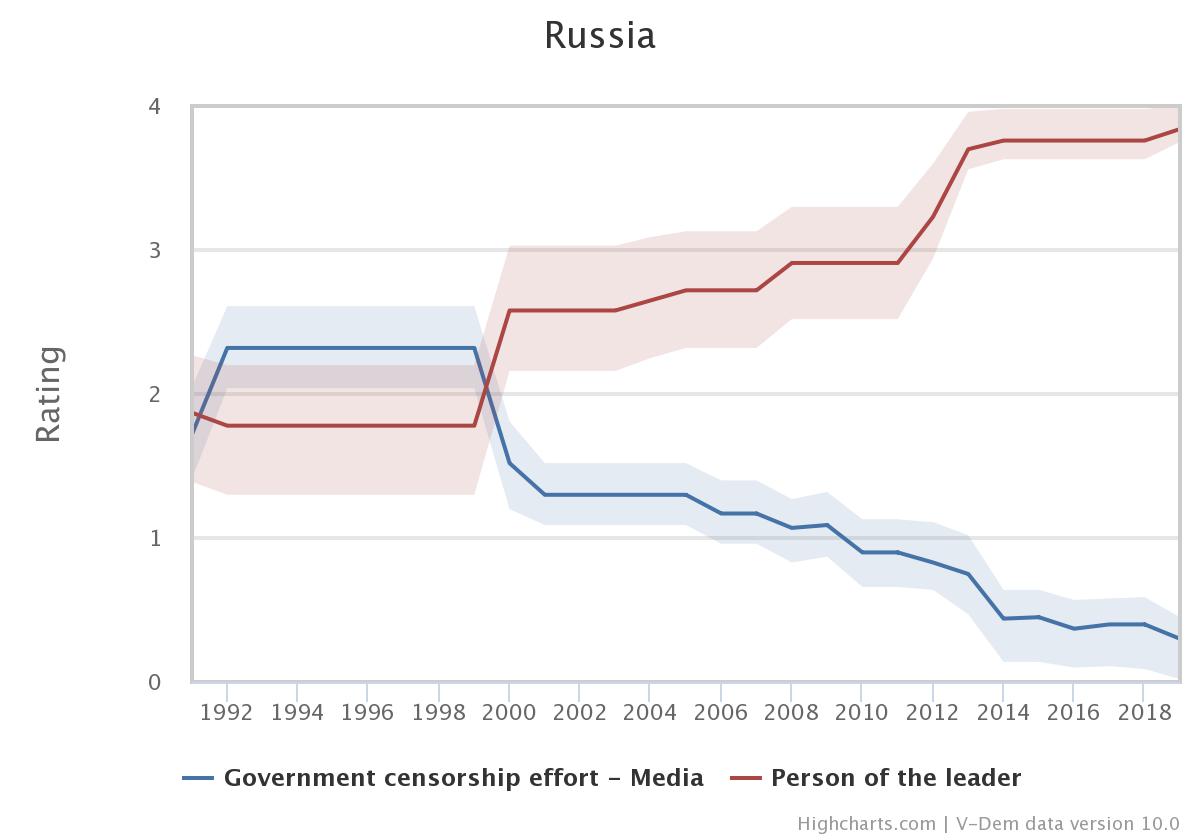The Rise of Personalism in Russia
By: Paul Bederke
Sep 09, 2020
On July 1, Russia voted in a referendum to reform the country’s constitution. The amendments enable President Vladimir Putin to run again for two more presidential terms allowing him to rule until 2036. Vladimir Putin would de-facto become president for life. This week’s V-Dem graph illustrates the Russian government’s legitimation strategies and its censorship efforts of the media to get an idea of how Vladimir Putin maintains power and generates public support.
V-Dem’s indicator Person of the leader tracks the extent to which the government portrayed the chief executive as being endowed with extraordinary personal characteristics and/or leadership skills. The chief executive could be perceived as the father or mother of the nation, exceptionally heroic, moral, pious, or wise. The Government censorship effort – Media indicator measures how directly or indirectly the government attempts to censor the print or broadcast media. The indicator ranges from 0 to 4, with a lower value indicating a more direct and routine attempt by the government to censor media.
Since December 31, 1999, Vladimir Putin has served as the head of state or head of government of Russia. Putin is considered a strong, charismatic leader who is perceived as a national hero. The graph shows how the image of Putin created by the government has risen over time. During that time, the indicator for media censorship efforts by the governments declined and censorship attempts are common today. Censorship was achieved by nationalizing or closing down newspapers and media networks through violence, intimidation or new legislation.
To learn more about the Person of the leader indicator and our online analysis tools, visit v-dem.net.


